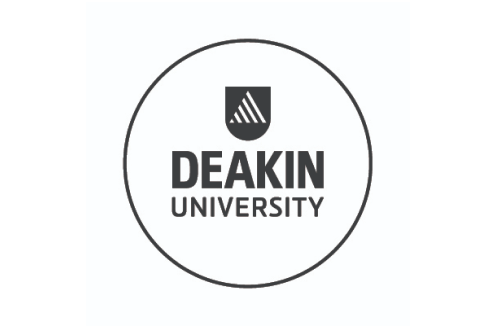- Great Learning
- Free Courses
- Data Science
Earn a certificate & get recognized
Principal Component Analysis
Enroll in this free course to understand the important concepts in Machine Learning – Principal Component Analysis, data preparation, and its transformation. Learn hypothesis testing and business analytics through case studies.
Instructor:
Dr. R.L. ShankarPrincipal Component Analysis
3.5K+ learners enrolled so far
Stand out with an industry-recognized certificate
10,000+ certificates claimed, get yours today!
Get noticed by top recruiters
Share on professional channels
Globally recognised
Land your dream job

Skills you will gain
Introduction to Business Analytics
Hypothesis Testing
Deep Dive into Principal Component Analysis
PCA Case Study
Key Highlights
Get free course content
Master in-demand skills & tools
Test your skills with quizzes
About this course
In this course, you will be introduced to Business Analytics and a hypothesis to understand the concept better. Later, you will learn about important terms employed, such as data collection, specification, and data transformation for analysis purposes. The main focus of the course will be on Principal Component Analysis, popularly transforming large datasets. The hypothesis helps you get familiar with statistical and error concepts in PCA. Lastly, the instructor will brief you with an example of a real-life case study that will help you understand MS Excel's statistical functions.
Do you want to upskill yourself further with Machine Learning? The wait is over with our professional Machine Learning Courses that cover every topic you need to make your career in this domain.
Course outline
Introduction to Business Analytics
In the introduction part, you will understand Business Analytics in brief. Later, you will understand topics such as data collection and specification of data for the analysis model. Lastly, you will learn to apply algorithms to predict models.
Hypothesis Testing Part 1
In this module, you will familiarize yourself with two types of hypotheses: Null and alternative. Then you will understand two types of errors that come in the application of these hypotheses. Lastly, you will learn about uniform powerful tests of the hypothesis.
Hypothesis Testing Part 2
This module discusses how you can apply the hypothesis in various exercises. It also covers various scenarios for applying the Null and Alternative hypotheses.
Deep Dive into Principal Component Analysis
In this module, you will learn about testing with reference to the previously discussed hypothesis in an example of a Marketing Exam. Using these hypotheses, you will learn to analyze the success and failure of a product in the market.
Principal Component Analysis Case Study
In the final module, you will understand how you can calculate the probability of Null and Alternative hypotheses for different scenarios using MS Excel. You will also learn some useful statistical functions of Excel.
Get access to the complete curriculum once you enroll in the course
Stand out with an industry-recognized certificate
10,000+ certificates claimed, get yours today!
Get noticed by top recruiters
Share on professional channels
Globally recognised
Land your dream job

Principal Component Analysis

0.75 Hours
Intermediate
3.5K+ learners enrolled so far
Get free course content
Master in-demand skills & tools
Test your skills with quizzes
Refer and earn
Get learning discounts up to $20
Our course instructor

Dr. R.L. Shankar
Professor, Finance & Analytics
Data Science Expert
Dr. R.L. Shankar is a professor of finance and analytics with over ten years of experience teaching MBA students, Ph.D. scholars and working executives. He has BTech from IIT Madras, MS in computational finance from Carnegie Mellon University, US, Ph.D. in Finance, EDHEC (Singapore), and has trained over 2,000 executives from prestigious firms. With multiple research papers published under his name, he recently received a research grant from NYU Stern School of Business and NSE for original research on Low latency trading and co-movement of asset prices.
Noteworthy achievements:
- Ranked 15th in the "20 Most Prominent Analytics & Data Science Academicians In India: 2018".
- Rated among the" Top 40 under 40" infuential teachers by the New Indian Express.
- Current Academic Position: Professor of Finance and Analytics, Great Lakes Institute of Management.
- Prominent Credentials: He has been a visiting professor at IIM Kozhikode, IIM Trichy, and IIM Ranchi. He is also a TEDx speaker.
- Research Interest: Algorithmic trading, market microstructure, imperfections in derivatives markets and non-parametric risk measurement techniques.
- Teaching Experience: More than 15 years.
- Ph.D. in Finance from EDHEC (Singapore).
Frequently Asked Questions
Will I receive a certificate upon completing this free course?
Is this course free?
What are the prerequisites required to learn this PCA course?
There are no special prerequisites required for this course. But it is better to know statistics before you enroll in this course.
How long does it take to complete this free Principal component analysis course?
It will take less than an hour to complete this course as the video content available has the duration of an hour. You can learn the course at your convenience since it is self-paced.
Will I have lifetime access to the free course?
Yes, you can access this course anytime and rewind the lessons at your convenience.
What are my next learning options after this PCA course?
After finishing this course, you can choose the professional Machine Learning course that will help you build your career in the trending field of technology. In addition, you can also go for an Analytics course to learn advanced skills in PCA.
Is it worth learning Principal Component Analysis?
Yes. The principal component analysis is a powerful technique used for the processing of data in Supervised Learning. It is useful for reducing the dimensionality of data, especially for large datasets.
What is PCA used for?
PCA is a popular machine learning technique used to reduce the dimensionality of data. It is very useful in increasing interpretability as well as minimizing information loss.
Why is PCA so popular?
The main reason behind the popularity of PCA is that it helps reduce the data's dimensionality. The very useful feature of PCA in the dataset is that it makes easy plotting of data in 2D and 3D.
What jobs demand that you learn Principal Component Analysis?
PCA is used in Unsupervised Machine Learning, and the demand for Machine learning skills is on trend nowadays. So, if you are familiar with PCA, then it will benefit you in Machine Learning skills and ultimately in getting a job.
Will I get a certificate after completing this PCA course?
Yes, you will get a course completion certificate after this course. But in order to avail the certificate, you will have to qualify the quiz or the assignment after finishing the course content. After qualifying the quiz, the certificate will be available in your Profile dashboard within 24 hours.
What knowledge and skills will I gain upon completing this PCA course?
This course is beneficial for students who are interested in Machine Learning. It covers the hypothesis and predictions that are very useful in Machine Learning. The students will learn about data collection, specification, and creating prediction models for the analysis of data.
How much does this Principal Component Analysis course cost?
The PCA course is completely free from Great Learning Academy, and anyone interested in Machine Learning can enroll in this course and start learning.
Is there a limit on how many times I can take this PCA course?
No, there’s no limit to the number of times you can take the course.
Can I sign up for multiple courses from Great Learning Academy at the same time?
Yes, you can sign up for as many courses as you want to learn from Great Learning Academy. These courses are self-paced, so you can also finish these courses at any time of your convenience.
Why choose Great Learning Academy for this PCA course?
Great Learning Academy is a large platform that provides education in various domains globally. It helps in the development of one’s professional career. There are more than 5 Million learners worldwide who benefitted from Great Learning courses in their careers. So, you can choose Great Learning Academy for this free course as the trainers of Great Learning are highly qualified and experienced. This provides a comprehensive curriculum to boost your knowledge in PCA.
Who is eligible to take this PCA course?
There are no eligibility criteria for enrolling in this course. Anyone interested in Principal component analysis and machine learning can enroll in this course for free.
What are the steps to enroll in this course?
You can follow the steps below to enroll in this course:
1. Click on the “Enroll for free” button on the course page.
2. Create an account on the Great Learning platform by providing your email id and other required details.
3. After that, you are successfully enrolled in the course, and you can access it anytime from your dashboard.
Become a Skilled Professional with Pro Courses
Gain work-ready skills with guided projects, top faculty and AI tools, all at an affordable price.


View Course

Included with Pro+ Subscription

View Course

Included with Pro+ Subscription
.jpg)
View Course

Included with Pro+ Subscription


View Course

Included with Pro+ Subscription


View Course

Included with Pro+ Subscription

View Course

Included with Pro+ Subscription

View Course

Included with Pro+ Subscription

View Course

Included with Pro+ Subscription


View Course

Included with Pro+ Subscription


View Course

Included with Pro+ Subscription


View Course

Included with Pro+ Subscription


View Course

Included with Pro+ Subscription



View Course

Included with Pro+ Subscription


View Course

Included with Pro+ Subscription

View Course

Included with Pro+ Subscription

View Course

Included with Pro+ Subscription

View Course

Included with Pro+ Subscription
.png)
View Course

Included with Pro+ Subscription

View Course

Included with Pro+ Subscription

View Course

Included with Pro+ Subscription

View Course

Included with Pro+ Subscription
.png)
View Course

Included with Pro+ Subscription



.jpg)

.jpg)

.png)

View Course

Included with Pro+ Subscription


.png)

View Course

Included with Pro+ Subscription

View Course

Included with Pro+ Subscription

View Course

Included with Pro+ Subscription
.png)
View Course

Included with Pro+ Subscription
.png)
View Course

Included with Pro+ Subscription
.png)
View Course

Included with Pro+ Subscription

View Course

Included with Pro+ Subscription

View Course

Included with Pro+ Subscription

View Course

Included with Pro+ Subscription

View Course

Included with Pro+ Subscription

View Course

Included with Pro+ Subscription

View Course

Included with Pro+ Subscription

View Course

Included with Pro+ Subscription


View Course

Included with Pro+ Subscription

View Course

Included with Pro+ Subscription


View Course

Included with Pro+ Subscription
 (1).png)
View Course

Included with Pro+ Subscription


View Course

Included with Pro+ Subscription

View Course

Included with Pro+ Subscription

View Course

Included with Pro+ Subscription

View Course

Included with Pro+ Subscription

View Course

Included with Pro+ Subscription

View Course

Included with Pro+ Subscription

View Course

Included with Pro+ Subscription
.png)
View Course

Included with Pro+ Subscription
.png)
View Course

Included with Pro+ Subscription




View Course

Included with Pro+ Subscription

View Course

Included with Pro+ Subscription

View Course

Included with Pro+ Subscription

View Course

Included with Pro+ Subscription

View Course

Included with Pro+ Subscription
.jpg)
View Course

Included with Pro+ Subscription
.png)
View Course

Included with Pro+ Subscription

View Course

Included with Pro+ Subscription

View Course

Included with Pro+ Subscription

View Course

Included with Pro+ Subscription

View Course

Included with Pro+ Subscription
.jpg)
View Course

Included with Pro+ Subscription
.jpg)
View Course

Included with Pro+ Subscription

View Course

Included with Pro+ Subscription

View Course

Included with Pro+ Subscription
 (1).jpg)
View Course

Included with Pro+ Subscription
.png)
View Course

Included with Pro+ Subscription
.png)
View Course

Included with Pro+ Subscription
.png)
View Course

Included with Pro+ Subscription
.png)
View Course

Included with Pro+ Subscription
.png)
View Course

Included with Pro+ Subscription

View Course

Included with Pro+ Subscription
Popular


View Course

Included with Pro+ Subscription

View Course

Included with Pro+ Subscription
.jpg)
View Course

Included with Pro+ Subscription


View Course

Included with Pro+ Subscription


View Course

Included with Pro+ Subscription

View Course

Included with Pro+ Subscription

View Course

Included with Pro+ Subscription

View Course

Included with Pro+ Subscription
Microsoft Courses


View Course

Included with Pro+ Subscription


View Course

Included with Pro+ Subscription


View Course

Included with Pro+ Subscription


View Course

Included with Pro+ Subscription


Data Science & ML

View Course

Included with Pro+ Subscription


View Course

Included with Pro+ Subscription

View Course

Included with Pro+ Subscription

View Course

Included with Pro+ Subscription

View Course

Included with Pro+ Subscription
.png)
View Course

Included with Pro+ Subscription
Cloud Computing

View Course

Included with Pro+ Subscription

View Course

Included with Pro+ Subscription

View Course

Included with Pro+ Subscription
.png)
View Course

Included with Pro+ Subscription



.jpg)

.jpg)

.png)

View Course

Included with Pro+ Subscription


.png)

View Course

Included with Pro+ Subscription
Cyber Security

View Course

Included with Pro+ Subscription

View Course

Included with Pro+ Subscription
.png)
View Course

Included with Pro+ Subscription
.png)
View Course

Included with Pro+ Subscription
.png)
View Course

Included with Pro+ Subscription
IT & Software

View Course

Included with Pro+ Subscription

View Course

Included with Pro+ Subscription

View Course

Included with Pro+ Subscription

View Course

Included with Pro+ Subscription

View Course

Included with Pro+ Subscription

View Course

Included with Pro+ Subscription

View Course

Included with Pro+ Subscription


View Course

Included with Pro+ Subscription

View Course

Included with Pro+ Subscription


View Course

Included with Pro+ Subscription
 (1).png)
View Course

Included with Pro+ Subscription


View Course

Included with Pro+ Subscription

View Course

Included with Pro+ Subscription

View Course

Included with Pro+ Subscription

View Course

Included with Pro+ Subscription

View Course

Included with Pro+ Subscription

View Course

Included with Pro+ Subscription

View Course

Included with Pro+ Subscription
.png)
View Course

Included with Pro+ Subscription
.png)
View Course

Included with Pro+ Subscription
AI & Generative AI




View Course

Included with Pro+ Subscription

View Course

Included with Pro+ Subscription

View Course

Included with Pro+ Subscription

View Course

Included with Pro+ Subscription

View Course

Included with Pro+ Subscription
.jpg)
View Course

Included with Pro+ Subscription
Management
.png)
View Course

Included with Pro+ Subscription

View Course

Included with Pro+ Subscription

View Course

Included with Pro+ Subscription

View Course

Included with Pro+ Subscription

View Course

Included with Pro+ Subscription
.jpg)
View Course

Included with Pro+ Subscription
.jpg)
View Course

Included with Pro+ Subscription

View Course

Included with Pro+ Subscription

View Course

Included with Pro+ Subscription
 (1).jpg)
View Course

Included with Pro+ Subscription
.png)
View Course

Included with Pro+ Subscription
.png)
View Course

Included with Pro+ Subscription
.png)
View Course

Included with Pro+ Subscription
.png)
View Course

Included with Pro+ Subscription
.png)
View Course

Included with Pro+ Subscription

View Course

Included with Pro+ Subscription
Subscribe to Academy Pro+ & get exclusive features
$25/month
No credit card required

Learn from 40+ Pro courses

Access 500+ certificates for free

Practice coding exercises & guided projects

Prep with AI mock interviews & resume builder
Recommended Free NLP courses




Similar courses you might like




Related Data Science Courses
-
Personalized Recommendations
Placement assistance
Personalized mentorship
Detailed curriculum
Learn from world-class faculties
50% Average salary hike -


12 weeks · Online
Know More
-


MIT Professional Education
Applied AI and Data Science Program14 Weeks · Live Online · Weekdays & Weekend
Know More
-


Deakin University
Master of Data Science (Global) Program24 Months · Online
Top 1% UniversityKnow More












